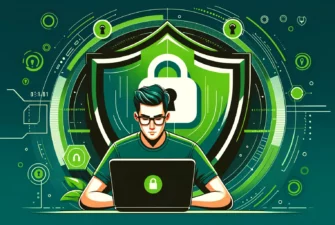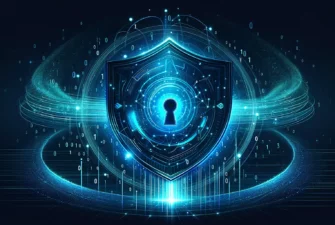
SSL/TLS encryption plays a vital role in ensuring the privacy and integrity of online communications, allowing us to share personal and financial information securely. However, as technology advances and computing power surges forward, concerns about the vulnerability of SSL encryption have emerged.
In recent years, the idea of cryptographic backdoors, quantum computing advancements, and brute-force attacks has fueled debates surrounding the security of SSL encryption. Can SSL be cracked? It’s a million-dollar question with a negative answer (for now). Cracking SSL encryption is a step too far for hackers and even modern machines. This article explains why it’s so difficult to decipher the latest SSL/TLS encryption algorithms.
Table of Contents
- How Long Does It Take To Crack an SSL Key?
- Can Hackers Crack SSL?
- How to Protect Sensitive Data from Cyber-Attacks?
How Long Does It Take To Crack an SSL Key?
Online businesses, corporations, and even governments rely on the Security Socket Layer called SSL 256-bit. It’s a standard specification for SSL encryption. It means that the key which was used to decrypt the messages that have been previously encrypted is a string of 256 characters, all ones, and zeros. Considering that each element of the 256 digits string has two possibilities (1 or 0), there are 2256 possible combinations.
How long would it take to flip through each of these possible keys? We’ll have to do some math here. Let’s take a high-performance GPU computer (graphic processing unit) that can perform about 2 billion calculations per second. Let’s say we have 1 billion computers like this, which are all connected in a parallel and efficient system. Together, they are capable of performing 2e18 combinations per second. This is how the number will look: 2 followed by 18 zeros: 2 000 000 000 000 000 000 keys per second (2 quintillions).
Since there are 31 556 952 seconds in a year, we can calculate how many operations our group of 1 billion computers can perform per year:
2e18 * 31 556 952 = 6.3113904e25
The result is 6.3113904 followed by 25 zeros.
Now let’s make further calculations in order to see how many years we need in order to crack the SSL code.
2^225 / 6.3113904^25 = 9.1732631e50 years
Scientists say that the universe exists for only 13.7 billion years, but we will need 9.1732631 followed by 50 zeros years to crack a 256-bit SSL Certificate.
Despite the billions of years needed to try every possible combination, 1 billion GPUs will require electricity from 150 nuclear power plants. That means 30% of all the world’s nuclear plants. Also, imagine the trillions of dollars that this energy will cost.
Can Hackers Crack SSL?
While no encryption method is entirely invulnerable, the complexity of SSL encryption makes it highly resistant to hacking attempts. If you’re wondering how to crack SSL, here are five reasons why even the best hackers have not been able to crack SSL encryption:
- Advanced Cryptographic Algorithms: SSL employs algorithms, such as AES (Advanced Encryption Standard) and RSA (Rivest-Shamir-Adleman), to encrypt data. These algorithms are widely regarded as secure and have withstood intense scrutiny from cryptographers and security experts. Their complexity and mathematical foundations make them extremely difficult to break, even for elite hackers.
- Lengthy Key Sizes: SSL encryption relies on cryptographic keys to secure data. The computational power required to break such keys using brute-force attacks is beyond the capabilities of hackers and even advanced computing systems.
- Constant Security Audits: The SSL/TLS protocol undergoes rigorous security audits and evaluations by experts in the field. Cryptographers, researchers, and security professionals continuously search for vulnerabilities or weaknesses. This ongoing scrutiny ensures that any discovered weaknesses are promptly addressed through updates and patches, making it exceedingly challenging for hackers to find exploitable flaws.
- Public Key Infrastructure (PKI): SSL certificates, issued and managed by trusted Certificate Authorities, play a crucial role in establishing the authenticity and integrity of encrypted connections. The hierarchical structure of Public Key Infrastructure ensures that only verified domains or entities obtain the SSL certificate.
- Constant Evolution: Web encryption continues to evolve in response to emerging threats and technological advancements. The most recent Transport Layer Security protocol introduces additional features and enhancements, including fewer cipher suites and a faster handshake.
How to Protect Sensitive Data from Cyber-Attacks?
SSL Dragon allows you to identify and choose the SSL Certificates that would suit your company best. We do that in order to help you to tailor an efficient system against cyber-attacks for your business. We can help you raise your server’s security level significantly.
SSL Dragon keeps your information safe and maintains secure SSL/TLS connections for your business. We offer the following SSL Certificate brands: DigiCert, Sectigo, Thawte, Geotrust, GoGetSSL, and RapidSSL. Here you can find our full list of SSL Certificates.
Conclusion
As computer performance increases, ongoing research and development in the field of cryptography remain essential to stay ahead of potential threats and maintain sensitive data integrity. And, while cracking SSL is beyond human capability, future super-computers could potentially have enough resources to deem current SSL/TLS technology obsolete. Until then, SSL certificates, and the TLS protocol remain the standard security measure for data interception and theft.
Frequently Asked Questions
SSL encryption has not been “cracked” as far as fundamental cryptographic algorithms are concerned. Vulnerabilities and attacks occur only when the certificate is fraudulently issued or compromised during improper SSL configuration and management.
Copy Link
Tools like SSLstrip and BEAST (Browser Exploit Against SSL/TLS) carry out specific attacks against SSL/TLS implementations but they aren’t an SSL encryption crack. Both leverage known vulnerabilities in specific SSL/TLS versions or configurations to intercept or manipulate encrypted communications. It’s important to note that these tools primarily target weaknesses in the protocol implementation rather than directly cracking the underlying encryption.
Copy Link
This is a million-dollar question without a definitive answer. According to Edward Snowden, the famous whistleblower, NSA is working on it. The New Yorker summarizes Snowden’s claims and the investigations carried out by the Guardian and New York Times on how the N.S.A attempted to crack the web.
Copy Link
Save 10% on SSL Certificates when ordering today!
Fast issuance, strong encryption, 99.99% browser trust, dedicated support, and 25-day money-back guarantee. Coupon code: SAVE10



























